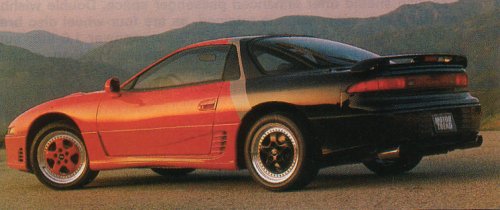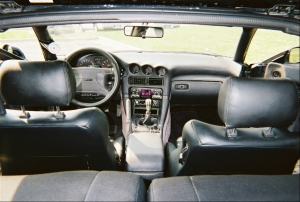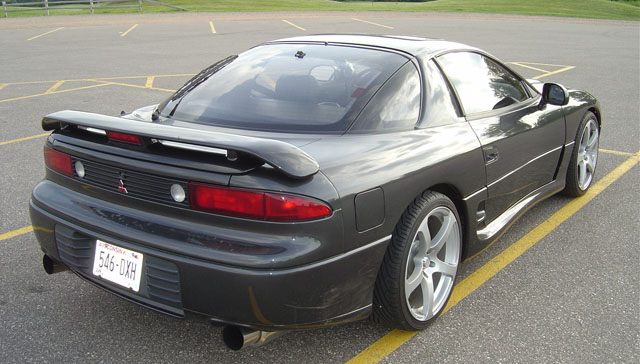1993 HKS Plus Mitsubishi 3000GT VR-4: Eclipsed Star

Back when Mitsubishi built sporty two cars, it offered something for almost everyone. From the Colt to the GTO, Mitsubishi seemed to have the bases covered. While globally Mitsubishi’s performance image could not have been any better, in America it had a rather frustrating dilemma. While the 3000 GT (GTO in Japan) was supposed to be the performance flagship and star, it was the smaller Eclipse that stole the show.
The 3000 GT and to some extent the Dodge Stealth RT Twin Turbo were supposed to be supercar killers with Ferrari like curves at Nissan Z car prices. As good as they were, they were overshadowed in the media by the smaller, less powerful Eclipse. The front or all-wheel drive Eclipse (Talon and Laser) offered the 3000GT formula at a much lower price point with a better power to weight ratio and subsequent top honors in its class.
To solve this dilemma, Mitsubishi of America commissioned the California-based HKS to beef up the 3000 GT VR-4. HKS was no stranger to staged performance enhancements to various Mitsubishi cars, but this was the first time a factory blessed 3000 GT “tuner” car was available to the public. The Stage VI package would showcase the full potential of Mitsubishi’s all-wheel drive supercar and maybe steal some of the thunder from the Eclipse GSX.
Normally the 300 hp all wheel drive coupe in VR-4 trim represented the ultimate in Mitsubishi performance outside of its racing Lancers. The HKS modifications started with boosting horsepower, not one of the 3000 GT’s biggest weak points. More boost to the twin turbos from 9 to 17 psi was enough to bring horsepower to a healthy 433. The second biggest complaint was the car’s weight, which was not increased much in the transition.
To make the car feel less heavy, considerable attention was given to improving handling to better accommodate the added power.
The 3000 GT’s suspension was bolstered with heavy-duty shocks, springs and bigger/wider 17 inch wheels draped with specially designed Toyo tires. The new rubber was originally intended for a Porsche Cup racing series that was canceled. All this new grip and power lowered 0 to 60 times from the low 5 second to high 4 second range. The already well designed interior got little change beyond a few extra boost gauges.
The 3000 GT already looks the part of an exotic right off the lot, but the HKS Plus enhancements adds a three color Ralliart paint scheme capted off with red DP Enduro rims in front and black in back. At nearly $13k on top of the 3000 GT’s list price in the high 30’s, the HKS Plus 3000 GT was approaching Corvette ZR-1 territory. It may be just as rare as very few were sold. The 3000 GT sold mostly in its mid and base models, making the HKS cars an even more rare sight.
In the end, the HKS Stage VI solution did little to raise the sales profile of the top 3000 GT’s, as buyers went mostly for the normally aspirated models. For a breif time the 300 GT was the top-selling Japanese sports car in America thanks in part to the popular Spyder. Despite that, the Eclipse, a GT car, had sales that more than doubled its bigger brother. The full HKS factory treatment lasted for a few model years, but individuals still had the option of building up their cars with HKS parts (and others) without committing to the high cost of entry.
Today Mitsubishi car buyers have no real all out factory approved performance options. As nice as the Lancer is, it represents the performance end of a line that includes the Galant. Every thing else is either a truck/SUV or an electric car.



